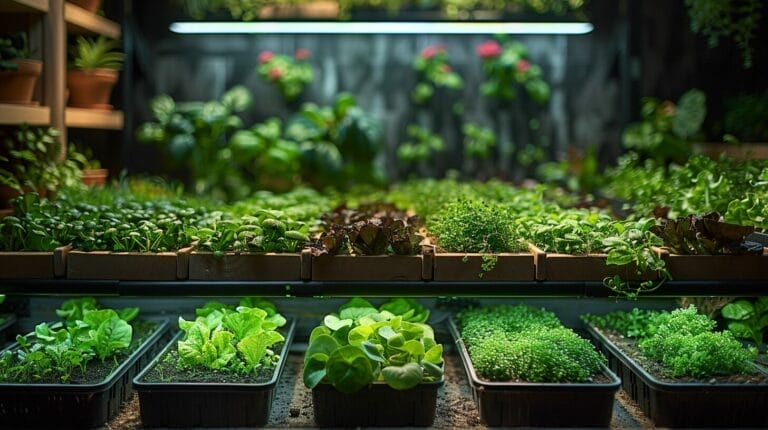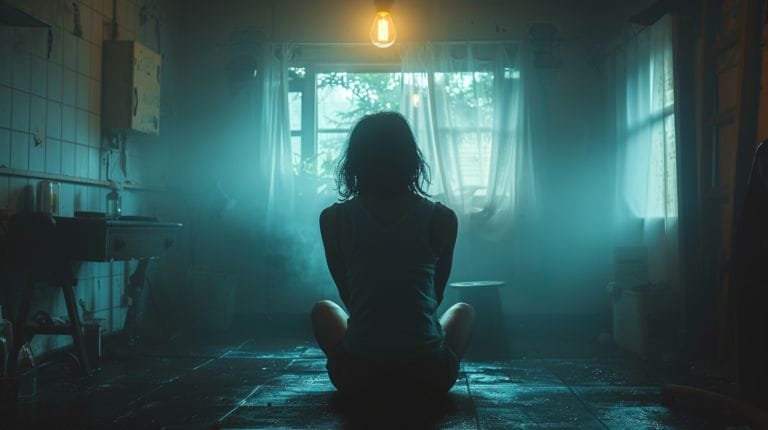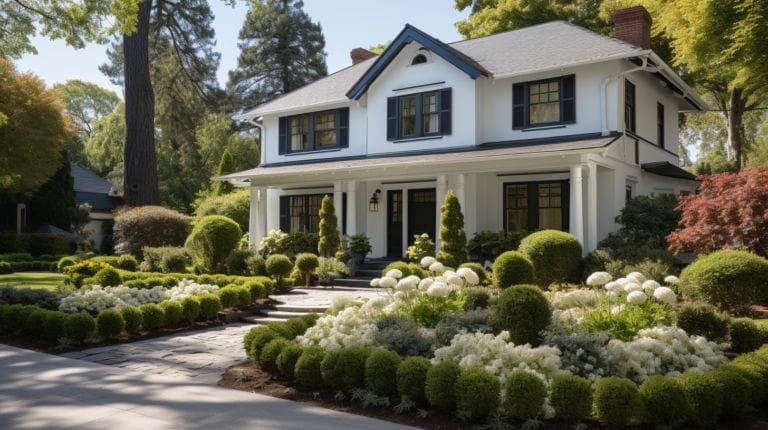Indoor Flood Lights LED: Brilliance for Every Space
As we step into the domain of indoor flood lights led, we uncover a world of brilliance that holds the potential to transform any space. The versatility and efficiency of these lighting fixtures offer a promising solution for various indoor settings. From enhancing the ambiance of a room to providing task-specific illumination, indoor flood lights led have much to offer.
So, why not explore how these lights can revolutionize your indoor environment and elevate your lighting experience to new heights of sophistication and functionality?
Key Takeaways
- Balanced lumen output ensures optimal indoor illumination.
- Wattage choice impacts brightness for different room sizes.
- Color temperature selection influences ambiance in indoor spaces.
- LED flood lights offer energy efficiency and cost savings.
- Proper installation and maintenance enhance indoor lighting performance.
Understanding the Basics of Indoor Flood Lights LED

Understanding how indoor flood lights led function is essential for maximizing their efficiency and benefits in various settings. LED flood lights are a popular choice for indoor use due to their high brightness levels and energy efficiency.
When considering LED flood lights for indoor spaces, one vital factor to pay attention to is lumens. Lumens measure the total amount of visible light emitted by a light source, indicating its brightness level. For indoor applications, it’s important to select LED flood lights with an appropriate lumen output to guarantee adequate illumination without being too harsh on the eyes.
LED flood lights designed for indoor use typically have a balanced lumen output that’s bright enough to light up the space effectively without causing discomfort. By understanding the relationship between lumens and brightness in LED flood lights, you can make informed decisions when selecting the right lighting options for your indoor environment.
Choosing the Right LED Flood Light Bulb for Your Indoor Space

When selecting the appropriate LED flood light bulb for your indoor space, it’s important to evaluate the best placement within the room. This evaluation guarantees that the light is distributed evenly and effectively illuminates the desired areas. Wattage plays a vital role in light bulb selection, as it determines the brightness of the LED flood light. Higher wattage bulbs are suitable for larger spaces or areas that require more intense lighting, while lower wattage bulbs work well for smaller rooms or accent lighting.
Color temperature, measured in Kelvin, is another essential factor to take into account when choosing LED flood lights for your indoor space. Warmer color temperatures (around 2700K-3000K) create a cozy and inviting ambiance, ideal for living rooms or bedrooms. On the other hand, cooler color temperatures (4000K and above) are better suited for task-oriented areas like kitchens or workspaces, as they provide a more energizing and focused light.
Benefits of Using LED Flood Lights for Indoor Lighting

LED flood lights offer numerous advantages for indoor lighting, including energy efficiency, longevity, and enhanced safety compared to traditional outdoor flood lights. When considering the benefits of using LED flood lights for indoor spaces, it becomes apparent that these modern lighting solutions outshine their traditional counterparts in various ways:
- Energy Efficiency: LED flood lights consume markedly less energy than traditional lighting options, leading to cost savings and reduced environmental impact.
- Longevity: With a much longer lifespan compared to traditional bulbs, LED flood lights require less frequent replacements, reducing maintenance costs and hassle.
- Safety Advantages: LED flood lights emit little heat, making them safer to use in indoor settings where overheating can be a concern. Additionally, they don’t contain harmful substances like mercury, promoting a healthier environment.
These benefits, coupled with the versatility of LED flood lights in indoor settings, make them a smart choice for those seeking innovative and efficient lighting solutions.
Installation and Mounting of Indoor Flood Lights LED

Exploring efficient ways to install and mount indoor flood lights led can greatly enhance the overall lighting experience in your space. When it comes to installation, a step-by-step guide can simplify the process, making sure that your lights are securely in place.
Additionally, choosing the right mount is important for best performance. Factors such as the lighting angle and the size of the space should be considered to achieve the desired lighting effect. To maintain your indoor flood lights led, regular cleaning and checking for any loose connections are essential to guarantee longevity and efficiency.
Below is a table summarizing key points for installing and mounting indoor flood lights led:
| Installation Tips | Mounting Advice | Maintenance Tricks |
|---|---|---|
| Follow the manufacturer’s instructions for wiring | Select a sturdy and suitable mounting surface | Clean lenses regularly to prevent dust buildup |
| Check for proper grounding | Ensure the correct angle for best lighting | Inspect for any loose connections |
| Test the lights after installation | Consider the size and layout of the space | Replace any damaged components promptly |
Comparing Indoor Flood Lights LED with Outdoor LED Flood Light Bulbs

Comparing indoor flood lights led with outdoor LED flood light bulbs reveals distinct differences in their design and functionality. When considering indoor applications, LED flood lights are typically designed to provide ambient lighting within a confined space, focusing on illuminating specific areas such as artwork or architectural features.
On the other hand, outdoor LED flood light bulbs are engineered to withstand harsh weather conditions and provide sufficient brightness for larger areas like parking lots or building facades.
- Color of the Light: indoor flood lights led often offer a variety of color temperatures to create different moods or enhance specific decor elements, while outdoor LED flood light bulbs are usually designed to provide bright white light for security and visibility purposes.
- Efficiency in Energy Consumption: indoor flood lights led are optimized for energy efficiency and may have dimming capabilities for versatility in lighting levels, whereas outdoor LED flood light bulbs prioritize brightness and durability over energy-saving features.
- Durability and Weather Resistance: Outdoor LED flood light bulbs are constructed with materials that can withstand exposure to elements like rain, snow, and UV rays, ensuring longevity and consistent performance in outdoor applications.
Conclusion
To sum up, indoor flood lights led are a smart choice for illuminating any indoor space with brilliance and efficiency.
By selecting the right lumen output, wattage, and color temperature, these lights can create the perfect ambiance for any room.
With their longevity, energy efficiency, and safety features, indoor flood lights led offer a cost-effective and versatile lighting solution for all indoor environments.
Make the switch to LED flood lights and experience the difference in your space today.
Frequently Asked Questions
What are LED flood lights and why are they popular for indoor spaces?
LED flood lights are powerful, energy-efficient lights that provide a broad amount of light suitable for both indoor and outdoor spaces. They are popular for indoor spaces due to their brightness, durability, and energy efficiency.
What is the significance of lumens when selecting indoor flood lights?
Lumens measure the amount of light produced by a light source. When selecting indoor flood lights, it is crucial to consider the lumen output to ensure the desired brightness level for the space.
How does color temperature affect the ambiance of indoor spaces with LED flood lights?
Color temperature, expressed in kelvin, determines the warmth or coolness of the light emitted by LED flood lights. Warm white light (lower kelvin) creates a cozy ambiance, while cool white light (higher kelvin) is ideal for task lighting in indoor spaces.
What should buyers keep in mind when buying LED flood lights for indoor areas?
Buyers should consider factors such as wattage, color temperature, and lumen output when purchasing LED flood lights for indoor spaces. It is essential to choose the correct replacement for incandescent or other types of lights to meet the lighting needs of the area.
Can LED flood lights be used for security lighting in indoor spaces?
Yes, LED flood lights are an excellent option for security lighting in indoor spaces due to their bright illumination, durability, and energy efficiency. They can help enhance visibility and safety within the premises.







